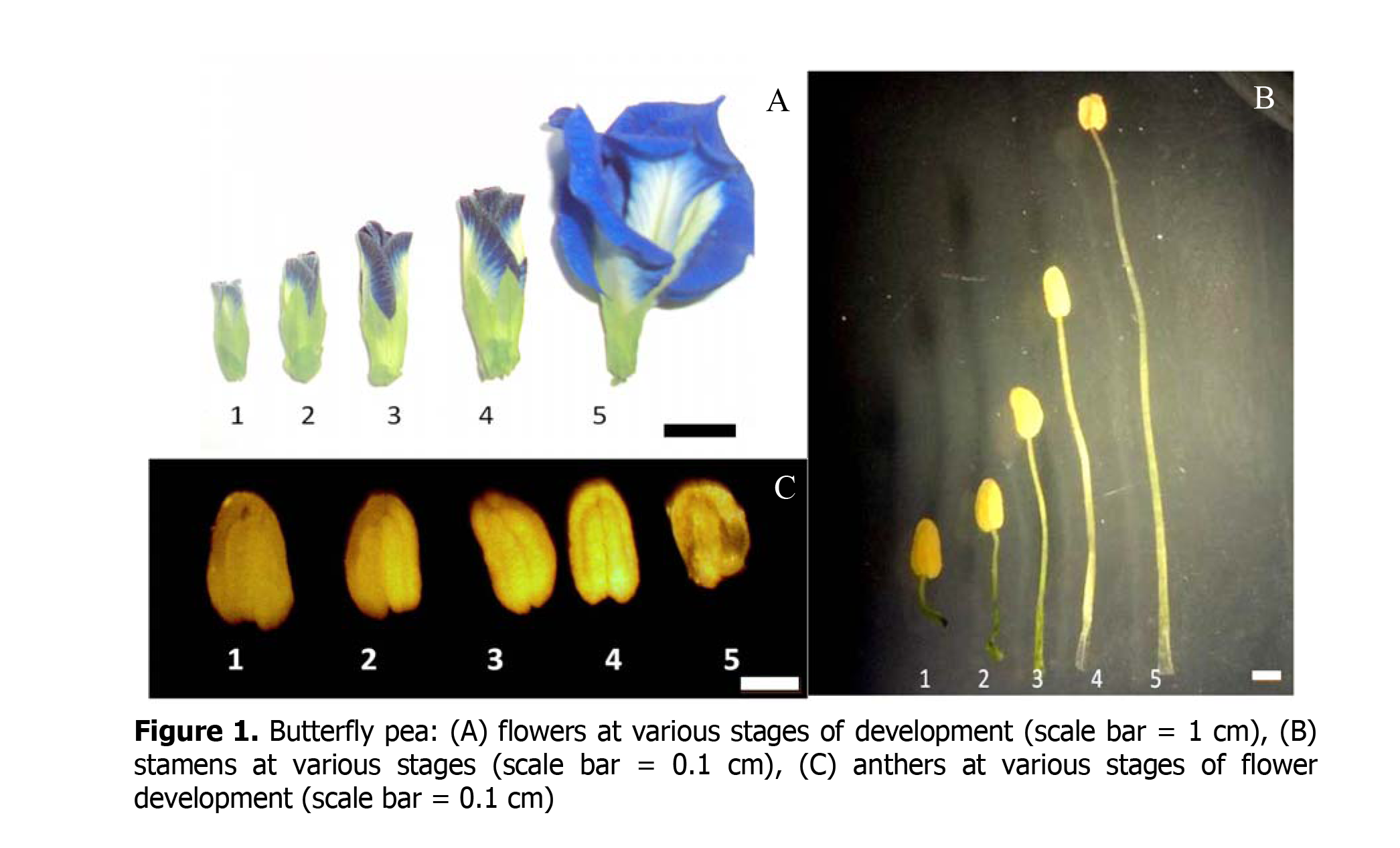Direct androgenesis in anther culture of butterfly pea related to flower development
Keywords:
Direct androgenesis in anther culture of butterfly pea related to flower developmentAbstract
Androgenesis is a biotechnological pathway of in vitro gametic embryogenesis with the potential leading to haploid plant production from male reproductive organ. Butterfly pea (Clitoria ternatea L.) is a versatile leguminous plant with the floral shape resembling a butterfly at full bloom. Based on the varying lengths of flower as well as petals and sepals, 5 stages of flower development were delineated. When anthers from flowers of these various stages were cultured on basal Murashige and Skoog medium supplemented with 3 mg/l 2,4-D and 60 or 80 g/l sucrose, it was found that anther-derived embryos (11.67 and 3.3% in the presence of 6 and 8% sucrose, respectively) were obtained only from stage 2 flowers. Light microscopic observation also revealed that the microspores of anthers isolated from flowers at stage 2 was uninucleate. This suggested that anther or microspore stage of butterfly pea played a very important role in direct androgenesis and 8% sucrose in the medium was detrimental to this process.


